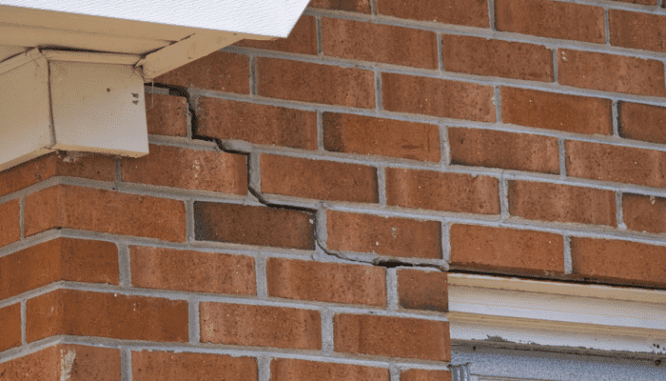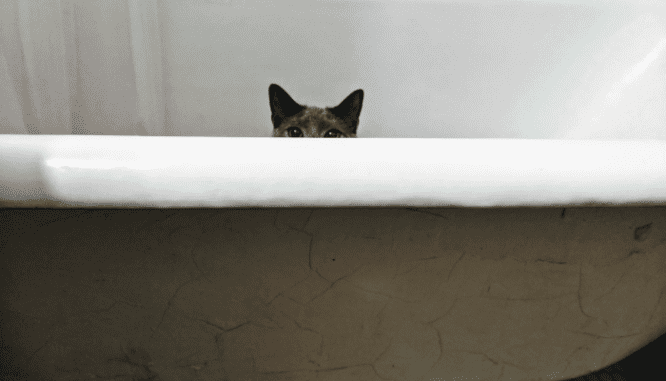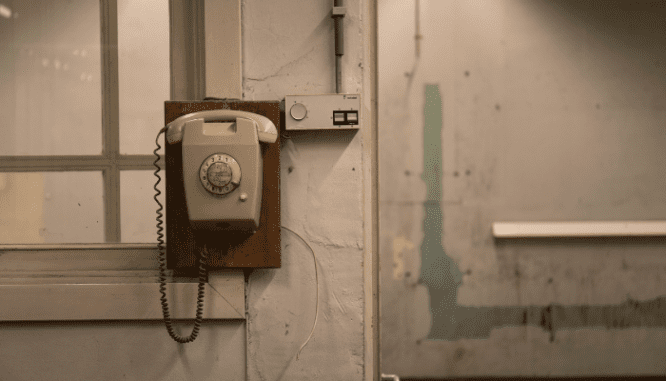7 Painfully Expensive Home Repairs to Avoid With Vigilance
- Published on
- 7 min read
-
 Laura Leavitt Contributing AuthorClose
Laura Leavitt Contributing AuthorClose Laura Leavitt Contributing Author
Laura Leavitt Contributing AuthorLaura Leavitt is a freelance writer and editor who has written about real estate and home-related topics since 2017, in addition to writing about travel, small businesses, and sustainability topics. She owns her own 112-year-old home in Ohio.
The average homeowner spent a total of $4,832 on routine and emergency home repairs in 2019. However, some of the most expensive home repairs have the ability to wipe out your entire yearly maintenance savings and then some.
On top of being pricey, major problems like pest infections and structural instability can make your home difficult to market and sell, not to mention tank your property value. With this guide, real estate experts identify the worst home repairs for your wallet and offer expert insights into preventive maintenance and early detection.

1. Sinking or settling foundation ($4,000-$10,000)
Your foundation serves as the base for your entire home. It needs to be in solid condition for the rest of your house to remain structurally sound. If it becomes damaged, the issue can spread and compromise almost any other part of the home in the form of jammed doors or sinking or uneven floors.
One of the most common foundation problems you can encounter is settling. Any foundation is going to settle gradually over time. However, trouble arises when there are drastic or sudden shifts in soil moisture levels, which can put pressure on the foundation and cause it to crack.
Here’s a summarized example provided by Family Waterproofing Solutions serving Illinois and Indiana for 25 years: Let’s say your house was built during the rainy season when the soil was damp and swollen. A few years later there’s a drought and the soil dramatically retracts. Because the soil wasn’t properly prepared at the time of the build, the house plunges five inches downward, damaging the foundation in the process.
Estimated cost to repair:
- Average foundation repair: $4,488
- Minor cracks: $500
- Major foundation repair (involving hydraulic piers): $10,000
(Source: HomeAdvisor, project costs reported by 3,102 HomeAdvisor members)
Key prevention tactics: You need to catch and fix foundation problems early on or they will only get more expensive to repair. “Check for cracks in brick or block foundations. If the crack is small and runs in a straight line, it could be settling,” advises Ray Kennamer, a general contractor of nearly 25 years in Albertville, Alabama.
If you suspect a foundation issue, a professional can help identify and diagnose it. Most likely, they will fill in any cracks with a cement mixture and install drainage solutions to halt the changes in moisture levels. Your foundation will thank you for it!
Warning signs:
- Foundation cracks that grow longer and wider over time
- Cracked or bowing walls
- Fractures above windows or door frames
- Doors or windows that stick
- Uneven floors
Who to call for help: Start with the Foundation Repair Network to find a local professional who can inspect and make recommendations for foundation repair.
2. Roof replacement ($5,000-$10,000)
Many homeowners, especially those in areas with a lot of sun, wind, and rain, are surprised when an inspection reveals the need for a new roof so soon. Robb Harrison, a top real estate agent in Ocala, FL, says that Florida weather can damage roofs prematurely, and a lack of ongoing maintenance can lead to irreparable problems.
“From the ground a roof can look amazing, but when someone gets up on the roof, you may find that it needs a new one,” says Harrison.
“It’s happened a few times where the inspection report came back that the house needed a new roof and everyone is shocked when it’s only been 15 or 20 years on 30-year shingles. You just really need to keep an eye on it.”
Estimated cost to repair:
- Low end: $3,500-$4,500
- Average: $5,250-$10,500
- High end: $12,000-$40,000
(Source: Fixr, estimates based on data from contractors, subcontractors, material suppliers, and more)
The good news is that a new roof adds value to your home. Data from HomeLight’s Top Agent Insights Survey for Q3 2019, featuring the expertise of over 400 real estate agents, found that a roof replacement costs an estimated $11,992, but recoups an average $10,842 for a 94% cost recovery.
Warning signs:
If you have a ladder long enough to see the roof safely, check for these red flags that it’s time for a roof replacement:
- Missing or curling shingles
- Missing flashing on chimneys or wall intersections
- Nails that need to be tamped down
Stains, streaks, or water in the attic are additional signs of a roof problem.
Key prevention tactics:
Kennamer, the general contractor in Alabama, recommends keeping an eye on cracks in roof boots and flanges.
“If they are cracked, you can re-caulk them with an all-weather caulk or replace them if they are decayed. Usually, to do it yourself it would cost in the range of $20-$30 or to hire a professional it will range from $75-$150,” he says.
Consider these additional tips to preserve your roof:
- Clean out clogged gutters to prevent ice dams from forming and so that water has a place to go when it rains.
- Keep an eye on moss, which can be cleaned with a 50/50 mix of chlorine bleach and water.
- Trim back trees overhanging the roof, as branches too close to the house can scratch off the protective layer of your shingles.
Who to call for help: To start your search for a roofing company, you can use the Better Business Bureau’s Roofing Contractors Near Me feature. When in doubt, cross-reference a few different sites to gauge client ratings and reviews for any particular roofer you’re considering.

3. Water damage ($1,000-$5,000)
Water in a home can destroy your ceiling, walls, flooring, and personal belongings, while moisture in the wrong places can lead to harmful mold. You don’t need a flood or other catastrophic event for water to intrude your home, either. A burst pipe, roof leak, clogged gutter, sewage backup, rotted siding, or broken fixture like an old bathtub can all cause water damage.
Unfortunately, water damage is a common home occurrence. Every day 14,000 Americans face a water damage emergency, while 98% of basements will have water damage at some point in their lifetime. However, there are steps you can take to protect your home from water intrusion.
Estimated cost to repair:
- Average: $3,030
- Low end: $1,170
- Mid-range: $4,890
(Source: Data reported by 1,106 HomeAdvisor members)
Warning signs:
Beyond walking down the stairs to find a flooded basement, these are few signs that you’ve got a water leak:
- Bubbling or peeling paint on your walls
- Stains and water marks on your walls or ceilings
- Damaged flooring
- High water bills
- Low water pressure
- Odd plumbing sounds
Key prevention tactics:
Since water damage can stem from a bunch of places including your plumbing, roof, or basement, you’ll need a multi-pronged prevention strategy:
- Take good care of your drains: Don’t pour grease down your kitchen sink and check under sinks around the house to make sure drains aren’t leaking on a regular basis.
- Install a sump pump: A sump pump protects your basement from flooding. When the pump senses water, it activates and sends moisture through a discharge pipe, keeping your carpet nice and dry.
- Check for damaged siding and repair it right away: Look for any discolored areas on your home’s siding, fascia, or soffit, which can be a sign of rotten or decayed wood. “You use a screwdriver to push into the wood to see if it penetrates the wood,” says Kennamer. “If so, it will need to be replaced.”
Who to call for help: If you have a leaky pipe or stained ceiling or wall, call a plumber to evaluate the situation. To remediate water damage, contact a water damage cleanup professional or restoration service.
4. Mold removal ($1,000 – $4,000)
Mold spores are usually harmless in small numbers, but when they find a warm or wet space that has a surface they can live upon, they reproduce. Some mold is dangerous to health, while other molds cause decay to your home’s structure. Finding mold damage after it has gotten out of control can be costly to repair.
Estimated cost to repair:
Average: $1,140
Low end: $60
High end: $4,300
(Source: Thumbtack, which tracks estimates from the millions of homeowners who use the site)
Warning signs:
If you notice little black spots that creep up the wall behind your water heater, line your basement windowsill, or colonize the area behind your washing machine, you’ve got mold and should take action to remove it.
If you don’t see mold but people in your home are having unexplained allergic or coughing symptoms, you might want a mold inspection. A moldy odor, especially when paired with water damage or a discovery of moisture and leaks, can also be a warning sign.
Key prevention tactics:
If you find small areas of mold (less than a total of 10 square feet), you can take a bleach solution to it. However, cleaning up mold, whether with bleach or another gentler solution, will only handle the mold growth — not the spores.
After the area builds up a resistance to the homemade mixture, the mold will drink up any water you are feeding it. For larger jobs, you’re better off calling a professional mold remediation service. You should also watch your home’s humidity levels and improve ventilation to prevent further mold growth.
Who to call for help: Mold inspectors are well-versed in finding and mitigating mold and many will do free estimates for the extent of the work required.
5. HVAC replacement ($7,000-$10,000)
An HVAC performs the essential function of keeping your home a comfortable temperature year-round. While an HVAC has a typical life expectancy of about 15 years, it can fail much sooner than that if you don’t properly maintain the unit. As a complex piece of machinery, it has also earned a reputation for being one of the most expensive items to replace or repair in a house.
Estimated cost to repair:
- Average: $7,000
- High: $10,000
- Low: $5,000
(Source: HomeAdvisor heating and cooling cost estimate guide)
Warning signs:
If your system is having trouble turning on and off or fails to keep the home at the comfortable temperature that you’re accustomed to, you’ll want to get the HVAC serviced. Checking for problems before your system stops can be the difference between a reasonably priced repair and an expensive replacement.
Key prevention tactics:
Yearly maintenance by professionals can help you catch concerns early. In addition, replacing the air filter every couple of months will help prevent wear and tear.
Who to call for help: Start with the BBB’s listings of HVAC Companies. Then check reviews on Google as well as around the web before selecting your top options for an HVAC company.

6. Electrical rewiring ($4,000-$12,000)
An older home’s electrical system easily can become overtaxed, causing fires and injury. In some cases a partial retrofit will suffice to make a house safe to live in. However, a number of old homes still have knob and tube wiring or aluminum wiring, both of which are fire hazards. If your house needs a full rewiring, the cost will be substantially higher.
Estimated cost to repair:
- 1,000-1,500 square foot home: $1,000-$6,000
- 2,000-2,500 square foot home: $4,000-$10,000
- 3,000 square foot home: $6,000-$12,000
(Source: Thumbtack, which tracks estimates from the millions of homeowners who use the site)
Warning signs:
If your breakers blow frequently, you see any visible damage to your wires, or notice a burning scent in the home, call an electrician to investigate the problem. An electrical inspection can determine whether old, outdated modes of wiring the house have put you in danger.
Key prevention tactics:
“In older homes, we’re finding that we need to have an electrician come out to cover lines to the water heater, so it isn’t a bare wire going from the water heater to the wall,” Harrison shares. While this won’t solve all the issues with old wiring, covering bare wires is key to reducing your fire risk, and a more thorough electrical inspection can help you find other concerning areas.
You should also install GFCI (ground fault circuit interrupter) outlets in the bathroom, kitchen, and anywhere outlets may come in contact with liquid. GFCI outlets interrupt an abnormal current flow to reduce the chance of electric shock.
Who to call for help: The Better Business Bureau’s Electricians Near Me portal helps you identify local electricians with proper credentials and positive ratings from past clients.
7. Termite damage ($3,000)
If they can find it, termites love to eat the wood in a house. Often, homeowners only discover signs of termite damage after these destructive little pests have weakened the wood in their home to a significant extent. Mitigating this damage can cost a lot of money, so catching termite activity early is key.
Estimated cost to repair:
According to pest control specialist Orkin, $3,000 is the average amount people spend to mitigate termite damage.
Warning signs:
These signs of termite damage should be on your radar:
- Wood that makes a hollow sound when tapped
- Crumbling wood
- Mud tubes on the side of your home’s foundation
- Peeling paint
- Mold or mildew smell
- Wings, termite bodies, or termite droppings
Key prevention tactics: If you have the ability to avoid contact between wooden parts of your home and the ground, you can reduce your termite risk. Special layers and meshes exist to make it hard for termites to access the home. Moving mulch away from your foundation is also a good idea — you don’t want to create a “red carpet” for termites to waltz into your abode so easily.
Who to call for help: Sites with reviews like HomeAdvisor have information on your local pest control specialists; you can usually get a termite inspection from the company with the best reputation and then use their services for mitigation if needed.

Pricey home repairs are no fun, but they do happen
No homeowner wants to foot the bill for a budget-busting home repair. However, keep in mind that no home is impervious to every little thing that could go wrong. Even the most conscientious caretakers will at some point write a check with more zeros than they were expecting. Do what you can to watch for key warning signs that one of your home’s major systems is crying out for help. To be safe, don’t blow your emergency savings fund. And when in doubt, have a good network of home repair pros on speed dial.
Header Image Source: (Markus Winkler / Unsplash)
